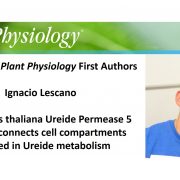
Recognizing Plant Physiology authors: Ignacio Lescano
Plant Physiology, Plant Physiology: Author ProfilesIgnacio Lescano, first author of Arabidopsis thaliana Ureide Permease 5 (AtUPS5) connects cell compartments involved in Ureide metabolism
Current Position: Postdoc in the Plant biology laboratory, CIQUIBIC-CONICET (Argentina)
Education: Degree in Biology and Ph.D. in Biology (National University…

Recognizing Plant Physiology authors: Maryam Foroozani
Plant Physiology, Plant Physiology: Author ProfilesMaryam Foroozani, first author of Low-phosphate chromatin dynamics predict a cell wall remodeling network in rice shoots
Current Position: Ph.D. student in the lab of Dr. Aaron Smith at Louisiana State University
Education: M.Sc. in Plant Cell & Developmental Biology, Shiraz University, Shiraz,…
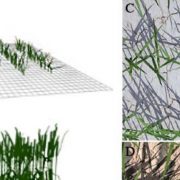
Simulation modeling platform provides a powerful tool for identifying optimal traits and management practices for wheat production
Plant Physiology, Plant Physiology: News and Views, ResearchAuthor: Robert P Skelton1
[email protected]
Affiliation: Dept. of Integrative Biology, University of California Berkeley, Berkeley, CA, 94720, USA
Global demand for food security places an emphasis on a need to improve crop yield. The complexity of plant development and its interaction…

No Stakes for High Strength Corn
Plant Physiology, Plant Physiology: News and Views, ResearchKim L Johnson
La Trobe Institute for Agriculture & Food, Department of Animal, Plant and Soil Sciences, La Trobe University, Bundoora, Victoria 3086, Australia
In September 2019 hurricane Dorian swept across to the southeast coast of the USA and strong winds and downpours led to major crop…

Recognizing Plant Physiology authors: Boris Mayer
Plant Physiology, Plant Physiology: Author ProfilesBoris Mayer, first author of Treatment analogous to seasonal change demonstrates the integration of cold responses in Brachypodium distachyon
Current Position: PhD candidate, Department of Plant Science, McGill University, Montreal, Canada
Education: MSc (Plant Science), McGill University
Non-scientific…
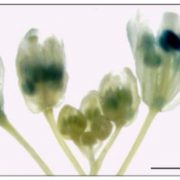
Plant Tomosyn is a negative regulator of SNARE-mediated secretion in pollen
Plant Physiology: News and Views, ResearchEmily R Larson, [email protected]
Vesicle transport is one of those molecular processes that is easy to take for granted. From cell expansion and polarised growth to protein regulation and signalling, vesicle trafficking plays its unsung part. We tend to believe that we know a lot about this…
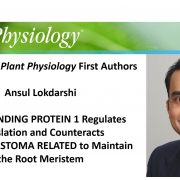
Recognizing Plant Physiology authors: Ansul Lokdarshi
Plant Physiology, Plant Physiology: Author ProfilesAnsul Lokdarshi, first author of ErbB-3 BINDING PROTEIN 1 Regulates Translation and Counteracts RETINOBLASTOMA RELATED to Maintain the Root Meristem
Current Position: Post-Doctoral Research Associate, The University of Tennessee, Knoxville
Education: Ph.D. Department of Biochemistry & Cellular…
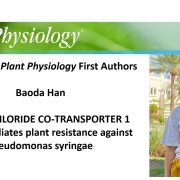
Recognizing Plant Physiology authors: Baoda Han
Plant Physiology, Plant Physiology: Author ProfilesBaoda Han, first author of CATION-CHLORIDE CO-TRANSPORTER 1 (CCC1) mediates plant resistance against Pseudomonas syringae
Current Position: Research Assistant
Education: M.S., Cell Biology, Northeast Forestry University, China, 2008-2011
Non-scientific Interests: swimming, singing, cooking, travel…
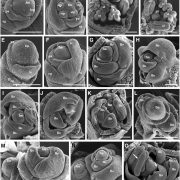
The Functions of Retinoblastoma-Related Proteins in Rice
Plant Physiology, Plant Physiology: On The InsideRETINOBLASTOMA was originally identified as a tumor suppressor gene in animals. A basic and core function of its protein is to control cell proliferation via regulating cell cycle entry. RB protein is also involved in regulating cell differentiation and organ specification. In plants, RBR (RB-Related)…

